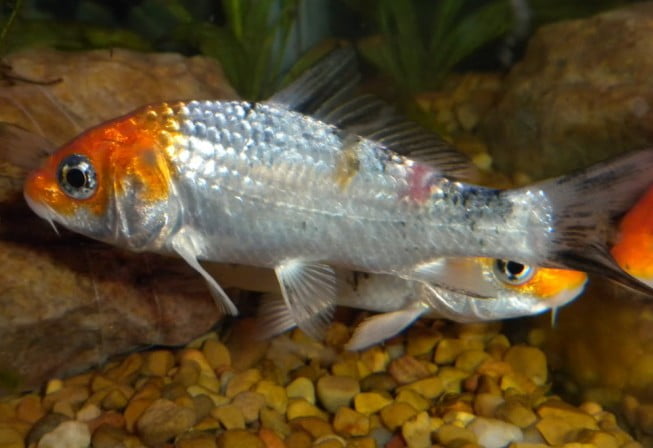If you’re thinking about buying a pet fish, you need to be aware of the risks of fungal fish diseases. Fungal infections can be difficult to detect, but they can cause serious health problems for your fish. In this article, we will discuss the symptoms and treatments of fungal fish diseases, as well as the best ways to prevent them. We will also explain the risks of buying a pet fish online, and how to ensure that you get a healthy fish. Read on to learn more about fungal fish diseases and how to keep your pet fish safe and healthy.
Introduction to Fungal Fish Diseases
Fungal fish diseases are a common problem for fish owners in Australia. Fungal infections can cause a variety of symptoms in fish, from skin lesions to internal organ damage. It is important for fish owners to be aware of the signs of fungal infections and the best ways to treat them.
Fungal infections are caused by a variety of fungi, including Saprolegnia, Achlya, and Fusarium. These fungi can enter the fish’s body through wounds or through the gills. Once inside the fish’s body, the fungus can spread quickly and cause a variety of symptoms. Common symptoms of fungal infections include white or gray patches on the skin, white or gray fuzz on the body or fins, and red or black lesions. In some cases, the fungus can cause internal organ damage, leading to organ failure and death. It is important to identify and treat fungal infections in fish as soon as possible in order to prevent further damage.
Common Types of Fungal Fish Diseases
Fungal fish diseases are a common problem in aquaculture and can cause significant losses in fish populations. There are a variety of fungal infections that can affect fish, and it is important to be aware of the different types in order to prevent and treat them.
The most common types of fungal fish diseases include Saprolegniasis, Ichthyophonus, and Branchiomycosis. Saprolegniasis is an infection caused by a type of water mould which can cause lesions on the skin, fins, and gills of fish. Ichthyophonus is a parasitic infection which can cause lesions on the skin, fins, and gills, and can also cause blindness and other neurological symptoms. Branchiomycosis is a fungal infection which causes lesions on the gills of fish, and can cause respiratory problems and death. All of these fungal infections can be treated with antibiotics, antifungal medications, and other treatments. It is important to identify the type of fungal infection in order to determine the best treatment for the fish.
Symptoms and Diagnosis of Fungal Fish Diseases
Fungal fish diseases can have a devastating effect on fish populations, and it is important to be able to recognise the symptoms and diagnose the disease in order to prevent it from spreading. Common symptoms of fungal fish diseases include white patches or spots on the skin, fins or gills, as well as a general loss of colour or discolouration of the skin. In more serious cases, the fish may experience ulcers, lesions, or a thickening of the skin.
In order to diagnose a fungal fish disease, a sample of the affected tissue should be taken and sent to a laboratory for analysis. This will allow the laboratory to identify the specific type of fungus causing the infection and the best course of treatment. In some cases, treatment may involve the use of antibiotics or antifungal medications, while in others, the affected fish may need to be removed from the water and treated with a specialised fungal medication. In either case, it is important to act quickly to prevent the disease from spreading.
Causes and Risk Factors of Fungal Fish Diseases
Fungal fish diseases are caused by a variety of fungi, including Saprolegnia, Achlya, and Pythium. These fungi can cause a range of symptoms, from mild skin irritation to serious internal damage. Understanding the causes and risk factors of fungal fish diseases can help aquarists take preventive measures to protect their fish.
The most common cause of fungal fish diseases is poor water quality. If the water is not regularly changed and filtered, it can become contaminated with fungi and other pathogens. Additionally, overcrowding of fish tanks can increase the risk of fungal infections, as can poor nutrition. Fish that are stressed or weakened by other diseases are also more likely to develop fungal infections. Temperature fluctuations, especially sudden drops, can also increase the risk of fungal infections. Finally, introducing new fish to an aquarium without proper quarantine can introduce fungal infections to the tank.
Prevention and Control of Fungal Fish Diseases
Fungal fish diseases are a major cause of mortality in farmed and wild fish populations, and can have a significant impact on the health of fish stocks. As such, prevention and control of fungal fish diseases is an important part of fish health management.
Prevention of fungal fish diseases is best achieved through good husbandry practices. This includes maintaining good water quality, avoiding overcrowding, and reducing stress on the fish. Good nutrition is also important, as fish that are malnourished are more likely to develop fungal infections. Quarantine of new fish and regular cleaning of tanks and equipment can also help to reduce the risk of fungal infections.
If a fungal infection is suspected, early diagnosis and treatment is essential. This may involve the use of antifungal drugs, either as a bath or in the water. In some cases, the infected fish may need to be isolated and treated separately. In addition, the environment in which the fish are kept should be monitored and treated to reduce the risk of further infections.
Treatment Options for Fungal Fish Diseases
Fungal fish diseases are a common problem for aquatic life, and can be difficult to treat. Fortunately, there are a range of treatment options available to help tackle this issue.
One of the most common treatments for fungal fish diseases is the use of antibiotics. These are usually administered via a water bath, and can help to reduce the severity of the infection. In some cases, a combination of antibiotics and antifungals may be necessary. Other medications, such as antifungal creams and ointments, may also be used to help alleviate symptoms.
Another option is to use natural treatments, such as adding beneficial bacteria to the water. This can help to create a healthy environment for the fish, and may help to reduce the severity of the infection. Additionally, adding certain types of plants to the tank can help to reduce the risk of fungal infections, as they can help to remove toxins and other pollutants from the water. Finally, regular water changes can help to keep the tank clean and reduce the likelihood of fungal fish diseases.
Impact of Fungal Fish Diseases on Aquaculture Industry
Fungal fish diseases can have a devastating impact on the aquaculture industry. Fungal infections can cause significant losses in production, resulting in high financial losses for businesses. Fungal infections can spread quickly, affecting the health of the fish and the quality of the product. Fungal infections can also lead to contamination of water supplies, which can cause further losses in production.
Fungal fish diseases can also cause environmental damage. Fungal infections can affect the natural balance of the aquatic environment, leading to disruption of the food chain. This can have a significant impact on the local ecosystem, as well as the aquaculture industry. Fungal fish diseases can also increase the risk of disease transmission between species, resulting in further losses in production. As such, it is important for aquaculture businesses to be aware of the risks posed by fungal fish diseases and take steps to prevent and manage them.
Final Thoughts
fungal fish diseases are a common problem for fish owners in Australia. Fungal infections can cause a variety of symptoms in fish, from skin lesions to internal organ damage. It is important for fish owners to be aware of the signs of fungal infections and the best ways to treat them. Common types of fungal fish diseases include Saprolegniasis, Ichthyophonus, and Branchiomycosis, and these can be treated with antibiotics, antifungal medications, and other treatments. Additionally, it is important to understand the causes and risk factors of fungal fish diseases, as well as the best ways to prevent and control them. By understanding the risks and taking preventive measures, fish owners can help to keep their pet fish safe and healthy.
Fungal Fish Diseases FAQs
Yes, fungal fish diseases can be contagious and can spread from fish to fish. It’s important to remove infected fish and objects from the aquarium and treat them separately to prevent the spread of the disease.
Yes, fungal fish diseases can be prevented by maintaining good water quality, providing proper nutrition and a balanced diet, and avoiding overcrowding. It’s also important to quarantine new fish and objects before introducing them to the aquarium.
While some natural remedies exist, it’s important to consult with a veterinarian or aquatic specialist before using any alternative treatments. Natural remedies may not be effective or could even harm your fish if not used properly. It’s always best to use medications that have been specifically formulated for fish.
Cotton wool disease can be treated with medications that contain malachite green or methylene blue. It’s also important to address any underlying issues, such as poor water quality or stress.
White spot disease can be treated with medications that contain copper or formalin. It’s also important to address any underlying issues, such as poor water quality or stress.
The length of treatment for fungal fish diseases depends on the severity of the infection and the type of medication used. It’s important to follow the instructions on the medication carefully and continue treatment until the infection has completely cleared up.
Fungal fish diseases are caused by fungi that infect the fish’s skin, fins, and gills. They can cause a variety of symptoms, such as white spots, cotton-like growths, and red or swollen areas.
White spot disease is characterized by small, white spots on the fish’s body and fins. The fish may also exhibit scratching or rubbing behavior, and may appear lethargic or lose appetite.
Fungal fish diseases are caused by a number of factors, including poor water quality, stress, and injuries. They can also result from introducing infected fish or objects into the aquarium.
Cotton wool disease is characterized by white, cotton-like growths on the fish’s body and fins. The fish may also exhibit lethargy, loss of appetite, and difficulty breathing.
The best way to prevent fungal fish diseases is to maintain good water quality and provide a stress-free environment for your fish. This includes regular water changes, avoiding overfeeding, and providing adequate hiding places and spaces to swim.





